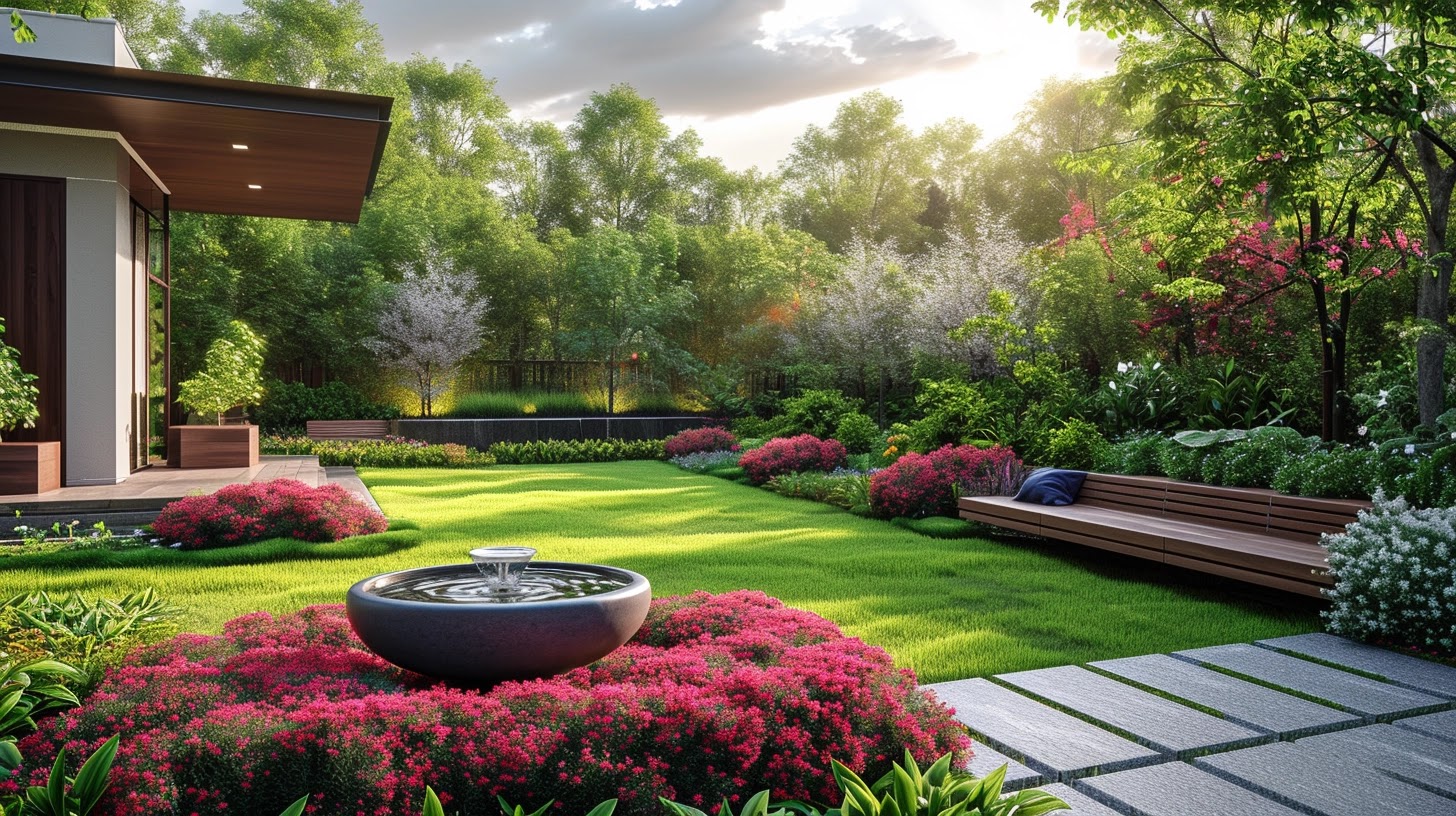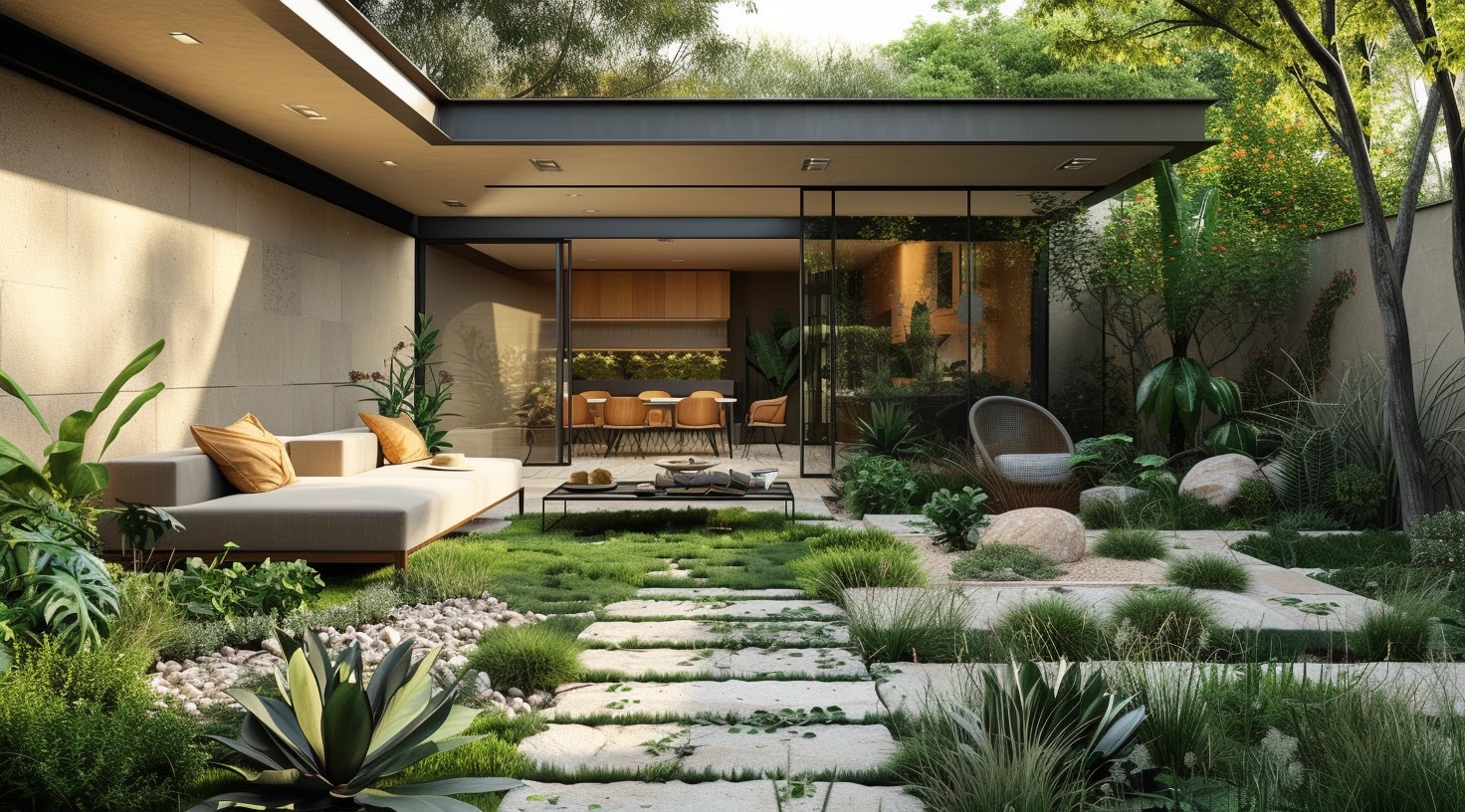Creating a beautiful garden is both an art and a science. A well-designed garden can provide a tranquil retreat, enhance the aesthetic appeal of your home, and even increase property value. This comprehensive guide to garden design will walk you through the essential steps and expert tips needed to transform your outdoor space into a stunning oasis. By integrating principles of garden design, you can create a harmonious environment that reflects your personal taste and lifestyle.
Understanding the Basics of Garden Design
Fundamentals of Layout and Planning
Before you begin planting, it’s crucial to understand the fundamentals of garden layout and planning. Effective garden design starts with a clear vision and careful consideration of the space available. Assess the size, shape, and orientation of your garden. Consider factors like sunlight exposure, soil type, and climate, which will influence plant selection and placement.
- Zoning Your Garden for Functionality
Divide your garden into zones based on functionality. Typical zones might include a dining area, a vegetable patch, a flower garden, and a relaxation area. Zoning helps in managing the space efficiently and makes the garden more functional and accessible.
Elements of Successful Garden Design
- Incorporating Variety and Balance
A key element of garden design is the balance between variety and harmony. Incorporate a diverse range of plant types and colors to create interest, but ensure there is a cohesive theme that ties the different elements together. Use color schemes to enhance visual appeal and create moods. For instance, cool blues and greens can create a calming effect, while vibrant reds and yellows add energy and vivacity.
- Creating Focal Points and Lines of Sight
Every garden should have one or more focal points — features that draw the eye and anchor the space. This could be a sculpture, a stunning plant, a tree, or a water feature. Plan your garden so that these focal points are visible from key viewing spots, such as a kitchen window or a patio.
Advanced Techniques in Garden Design
- Mastering the Use of Textures and Layers
Advanced garden design involves mastering the use of textures and layers. Textural variety can be achieved through the use of different foliage, bark, flowers, and hardscaping materials. Layering plants of varying heights and types adds depth and interest to the garden, creating a more dynamic space.
- Implementing Sustainable Practices
Sustainability is increasingly important in garden design. Opt for native plants that require less water and are more resistant to local pests. Incorporate rain gardens, composting systems, and permeable paving to reduce water runoff and enrich the soil.
Tailoring Garden Design to Personal Style and Needs
- Reflecting Personal Style
Your garden should be a reflection of your personal style. Whether you prefer a formal garden with geometric shapes and manicured hedges, or a more natural, wild garden, ensure the design elements reflect the aesthetics you enjoy. Personal touches, such as decorative pots, unique plants, and custom art pieces, can add character and uniqueness to your garden.
- Adapting to Lifestyle Requirements
Consider your lifestyle when designing your garden. If you have children or pets, incorporate safe and engaging spaces for them. If you entertain often, consider designing a robust outdoor living area with seating and a fire pit or barbecue.
Practical Tips for Implementing Your Garden Design
- Starting Small
If you’re new to gardening, start small. Focus on one area of your garden and expand as you gain confidence and experience. This approach reduces the initial workload and allows for adjustments based on what works best in your space.
- Choosing the Right Plants
Selecting the right plants is crucial for the success of your garden design. Consider not only the aesthetic aspects but also how well the plants will adapt to your garden’s conditions. Research plant requirements thoroughly before making decisions.
- Ongoing Maintenance and Care
A successful garden design requires ongoing maintenance. Establish a regular care routine that includes watering, pruning, weeding, and monitoring plant health. A well-maintained garden continues to grow and evolve over time, increasing in beauty and complexity.
Realizing Your Garden Design Dreams
Garden design is a rewarding endeavor that can dingdongtogel dramatically transform your outdoor space into a beautiful, functional oasis. By understanding the basic principles, applying advanced techniques, and adapting the space to your personal needs and style, you can master the art of garden design. With patience and creativity, your garden will flourish, providing a stunning backdrop to your home and a peaceful retreat for you to enjoy for years to come. For expert assistance in executing bespoke landscaping plans that bring garden visions to life, Cheshire Driveways and Landscaping offers professional services that balance aesthetics with functionality.


